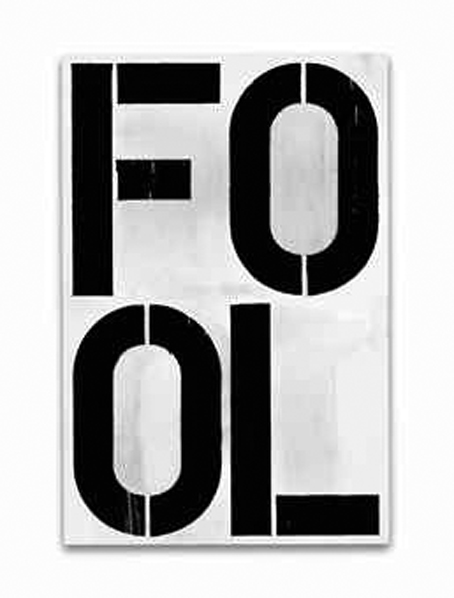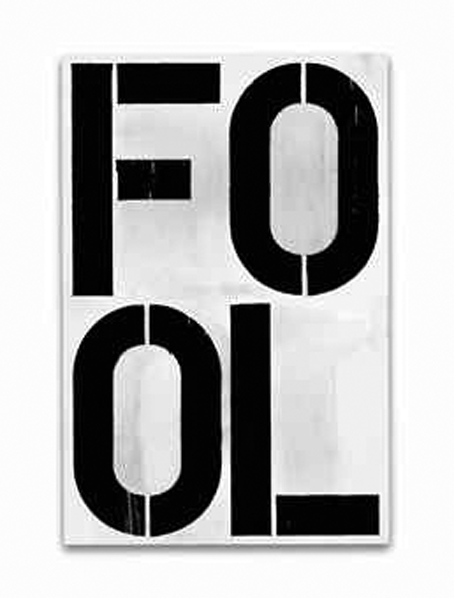Eric Coombes responds to an editorial about the art cash cow
 Is a celebrity a person ‘famous for being famous’, or merely ‘someone in the media that one had never heard of’. Despite being obscure – in this paradoxical and mysterious mode of obscurity – celebrities, however ill-informed and stupid they might be, are entitled to have their ‘opinions’ widely disseminated, and heard, at least with respect, and quite possibly with hysterical enthusiasm – especially if they are ‘comedians’. This entitlement is now regularly exercised, on an almost weekly basis, in supposedly serious discussion programmes such as Question Time.
Is a celebrity a person ‘famous for being famous’, or merely ‘someone in the media that one had never heard of’. Despite being obscure – in this paradoxical and mysterious mode of obscurity – celebrities, however ill-informed and stupid they might be, are entitled to have their ‘opinions’ widely disseminated, and heard, at least with respect, and quite possibly with hysterical enthusiasm – especially if they are ‘comedians’. This entitlement is now regularly exercised, on an almost weekly basis, in supposedly serious discussion programmes such as Question Time.
If we regard his ‘work’ as the equivalent of the celebrity’s ‘opinions’, then the status of Christopher Wool, who appears to have ‘risen without trace’, as described in the Nov/Dec editorial, is strikingly analogous to that of a celebrity with opinions as fatuous and ungrounded as Wool’s ‘art’. As our editor observes, the ‘value’ of a Wool ‘resides purely in its perceived status as a tradeable luxury’. There is nothing new in the craving for social status, and its pursuit through ostentatious display or ‘conspicuous consumption’, to use Thorstein Veblen’s term. But in the past, the ‘work of art’ – as tradeable luxury and vehicle of social display – however vulgar or spurious, at least had observable features that a rich undiscriminating fool could be duped into mistaking for the marks of aesthetic merit. What is new is the sublimation of social display to the point where the vehicle of display is purged of such features, and reduced to its essence as a counter in the game of social display itself.
The situation is cleverly described by the editor as one where a ‘work of art’ (improperly so-called, to adapt an expression of Collingwood’s) has value in the same sense in which a share certificate has value, and, moreover, appears to function in much the same way. But a share certificate does not pretend to have value merely in itself: it is evidence of a property right, namely part ownership of a company, and in certain circumstances the right of ownership might be upheld by the production of alternative evidence – if, for example, the certificate had been destroyed in a fire.
We might, therefore, want to take this analogy even further, to the interesting case of money itself. The real value of a banknote consists in nothing but the shared agreement to treat it as having value, by people who know perfectly well that this is the case, if they trouble to think about it at all. It appears that the monetary ‘value’ of some ‘works of art’, now consists in nothing but their ownership being evidence of the owner’s having the money to buy the ownership of the evidence of the ability to buy the ownership of the evidence … . Clearly, this sequence moves endlessly in a circle of self-sufficiency, which has no contact with any reality beyond itself.
The analogy with money need not be laboured. Here too we clearly have circularity – circularity of a kind which characterizes the logical structure of all human institutions. (See John Searle: The Construction of Social Reality. I am using the term ‘institution’ in the widest sense to include not just formal institutions, but all domains of human possibility established by agreements and understandings, very largely tacit.) Is this a vicious circle? Well, despite recent events, presumably not, since the institution of money has not yet collapsed. Vicious circles are small circles, engaging with nothing but the contents of the circle itself. But the institution of money involves a huge circle, and one which is not self-contained, but part of a wider system of mutually supporting institutions which constitute society itself. The entire edifice of culture is constructed out of this unimaginably complex system of interlocking institutions, all depending on agreements, ultimately tacit, of which we may not even be conscious.
The arts are no exception to this; and, in this respect like money, are connected with the institutions of the wider culture – in and through which people find meaning and satisfaction – by chains of tacit agreement. These chains can form virtuous circles because they are neither small nor self-contained. But traders in Wool and cognate commodities are confined to a small coterie of art-market plutocrats and their jackals, which excludes the wider culture. Tiny and self-contained, this coterie assembles itself into a vicious circle, which sustains a pretence destined eventually to collapse – not before doing much harm. It is parasitic on established institutions, which support it as the body supports lice. It is, however, no more harmful than the vicious circle of state art, which has also detached itself from the institutions of art (properly so-called), and usurped their authority. This true authority – when it exists at all – emerges tacitly in traditions of practice and criticism that are integrated into the wider culture, and belongs to institutions that are quite distinct from such officially constituted entities as the Tate Galleries, or the Arts Council.
